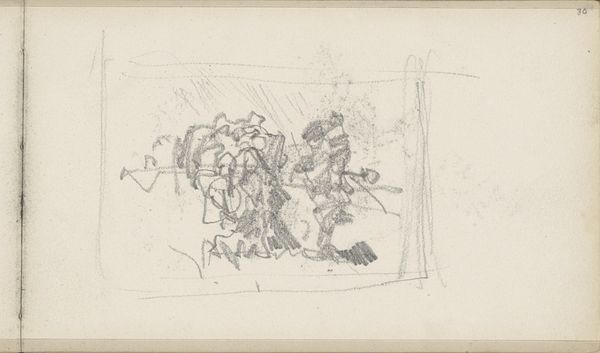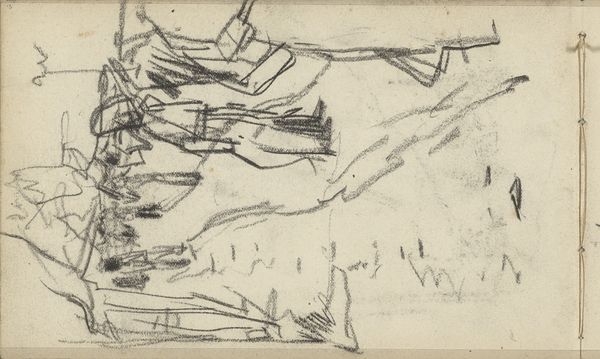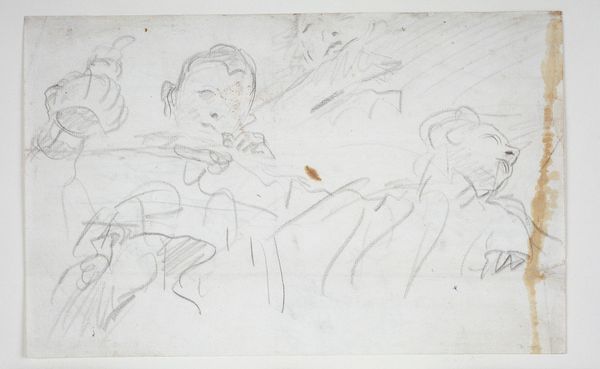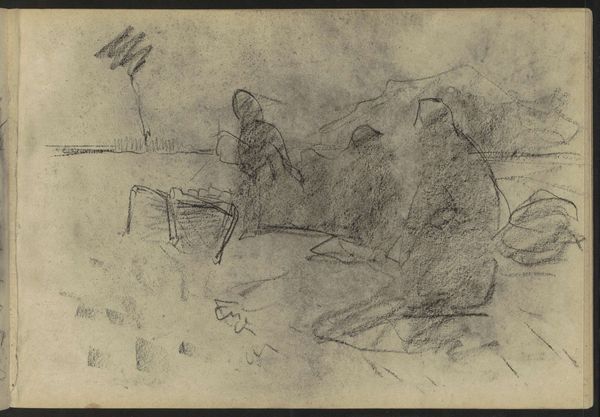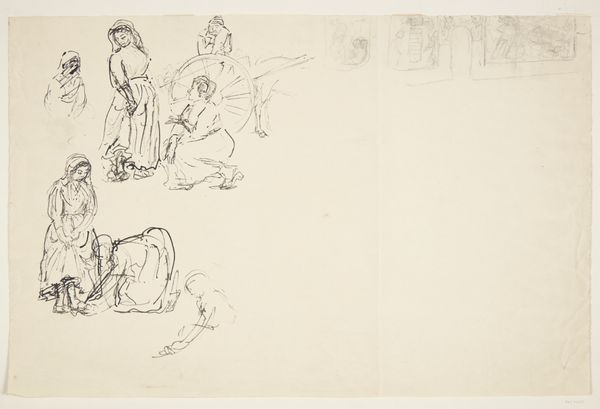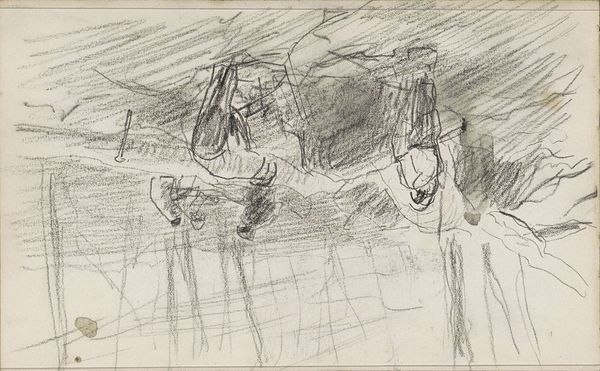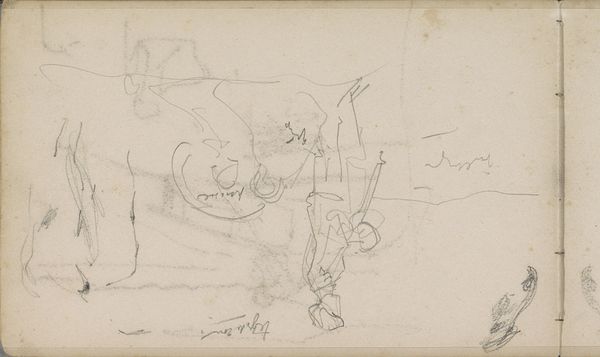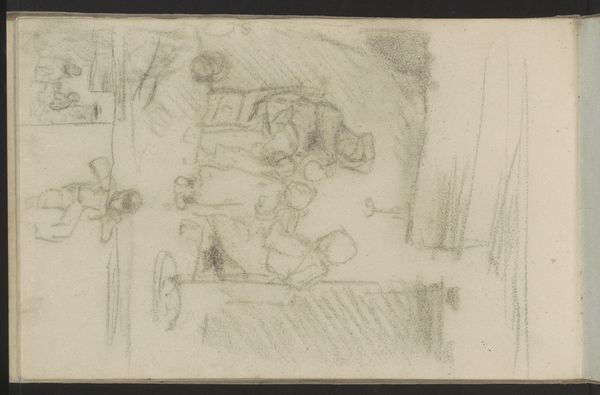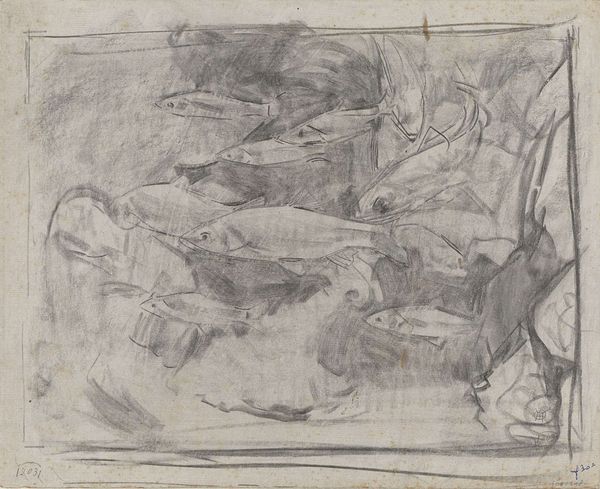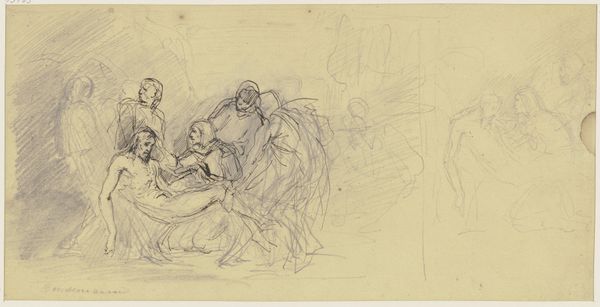![Skirmish Involving a Wagon Train [verso] by Winslow Homer](/_next/image?url=https%3A%2F%2Fd2w8kbdekdi1gv.cloudfront.net%2FeyJidWNrZXQiOiAiYXJ0ZXJhLWltYWdlcy1idWNrZXQiLCAia2V5IjogImFydHdvcmtzL2QzYjA0NjE1LTk0YzQtNGYyOC1iNDdiLTU3MmU0OTMyZGU4NC9kM2IwNDYxNS05NGM0LTRmMjgtYjQ3Yi01NzJlNDkzMmRlODRfZnVsbC5qcGciLCAiZWRpdHMiOiB7InJlc2l6ZSI6IHsid2lkdGgiOiAxOTIwLCAiaGVpZ2h0IjogMTkyMCwgImZpdCI6ICJpbnNpZGUifX19&w=3840&q=75)
Dimensions: overall: 23.7 x 30.9 cm (9 5/16 x 12 3/16 in.)
Copyright: National Gallery of Art: CC0 1.0
Winslow Homer rendered this drawing of a skirmish involving a wagon train in graphite and black chalk. Its visual codes evoke the westward expansion in 19th-century America, a period marked by both opportunity and conflict. The imagery of wagon trains is heavy with historical associations, representing not only pioneer spirit but also the displacement and violence inflicted upon Native American populations. Homer's choice to depict a 'skirmish' points to the tensions inherent in this period of expansion, where encounters between settlers and indigenous peoples often turned violent. How does Homer’s art depict and perhaps challenge the period’s prevailing notions of progress and settlement? Does it critique the romanticized narratives of the Wild West? The work can be better understood by researching the cultural and political contexts of westward expansion, including government policies, social attitudes, and the narratives promoted through popular media. Such research can provide insight into the complex social dynamics that shaped artistic production and reception.
Comments
No comments
Be the first to comment and join the conversation on the ultimate creative platform.
